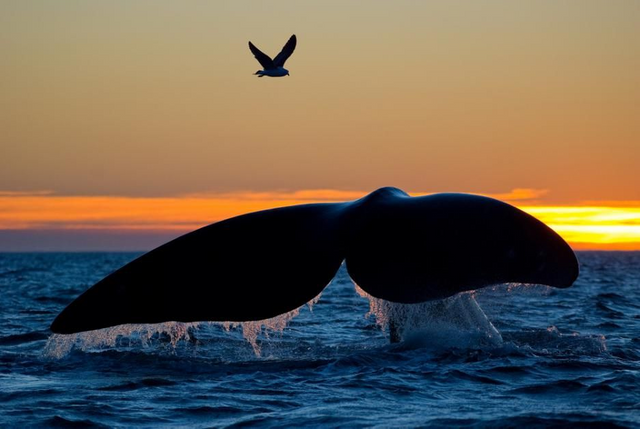
Smart and sociable, whales build closer ties with each other. It is now clear that these links can be even stronger than death.
More than six species of marine mammals are seen clinging to the body of a dead brother, a member of the herd or relative, says a new study.
The most likely explanation for the refusal of the animals leave the corpses tribulation.
"They complain about them" - says one of the authors of the study, Melissa regent, a biologist at the University of Milan-Bicocca in Italy. "Whales are experiencing pain and stress. They know that something bad has happened. "
Scientists have found that an increasing number of species from giraffes to chimpanzees behave like cut down by grief. Elephants, for example, returning again and again to the body of their dead companions.
Similar findings contribute to debate whether animals experience emotions and if so, how such emotions can affect people's attitude towards other living beings.
Barbara King, professor emeritus of anthropology at the "end William Mary College" in Williamsburg, Virginia and author of "How animals grieve" describes the grief of the animals as "emotional disturbance associated with disruption of normal behavior."
watch
For the study regent and her colleagues collected reports, most of them unpublished, about the behavior of Sorrows in seven types of whales, the enormous sperm whale to the relatively small dalgoklyuna wall.
All seven species stand beside their dead fellows in the oceans, says the study published in the Journal of Mammalogy .
"We found that this behavior is common and widespread throughout the world."
Scientists on a ship in the Red Sea as watching how the Indo-Pacific bottlenose dolphin dolphin push already highly decomposed body of a small dolphin in the water.
Once researchers caught with a noose dead animal to bury him, the adult dolphin swim to the body, touching it occasionally until the water becomes dangerously shallow. Long after the corpse was brought, the old remains near the beach. It is not clear how connected two dolphins, but were possibly a mother and child or close relatives, said Regent.
Such behavior ultimately has a high price - watchful near the dead body kit neither eats nor maintain ties with drigute whales.
Complaint nearby
Sometimes scientists have enough information about the relationship between the complainants and the dead.
Female killer whale, known as L72, was spotted near San Juan Island, Washington, wearing a dead newborn in her mouth. It bears scars of the recent birth and scientists know that sufficient time has elapsed since the birth of its last bit, so had to wait another.
"She was trying to hold the body of a small surface throughout, balancing it on top of his head - said another co-author of the study - Robin Baird cascade Research, who witnessed the scene.
Mother killer whale and her offspring can spend their whole lives together, he said. When one of them dies, he is convinced Baird "animals go through a period in which experience the same type of emotions that I experienced or you would if a loved one dies."
The study cites other reports of whales that hold dead young in their mouths, carry them to the water and touch them with their fins.
In one case, a tropical Grindel in the North Atlantic makes protective circle around another adult whale and its dead less. In another case, a dalgoklyuna wall in the Red Sea push your body slightly to one ship. When traveling on the ship picked up the body of the board, the whole group of dolphins makes a circle around the ship and sail.
"We can not explain why they do it - says regent.
true grief
Anthropologist King agrees that such incidents show that whales grieve.
"Surely we can sometimes see curiosity, studying or caring behavior that simply can not be" off "time - she says.
"But it is undeniable that we can read something from the anguish of animals in the energy they expend to bring the dead or keep them on the surface to touch the body again and again and swim in the social circle that surrounds the main affected individual . "
Source: www.euroscientist.com , www.pixabay.com
https://news.nationalgeographic.com/2016/07/whales-death-grief-animals-science/
Not indicating that the content you copy/paste is not your original work could be seen as plagiarism.
Some tips to share content and add value:
Repeated plagiarized posts are considered spam. Spam is discouraged by the community, and may result in action from the cheetah bot.
Plagiarism via translation, transcribing, or word spinning shows a willingness to circumvent detection. This type of spam is dealt with most severely.
You have continually spun articles and presented fake sources. You can expect increased scrutiny going forward.
Downvoting a post can decrease pending rewards and make it less visible. Common reasons:
Submit